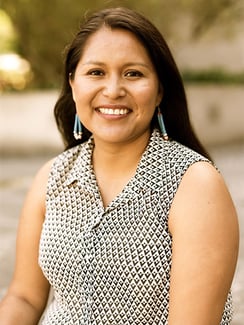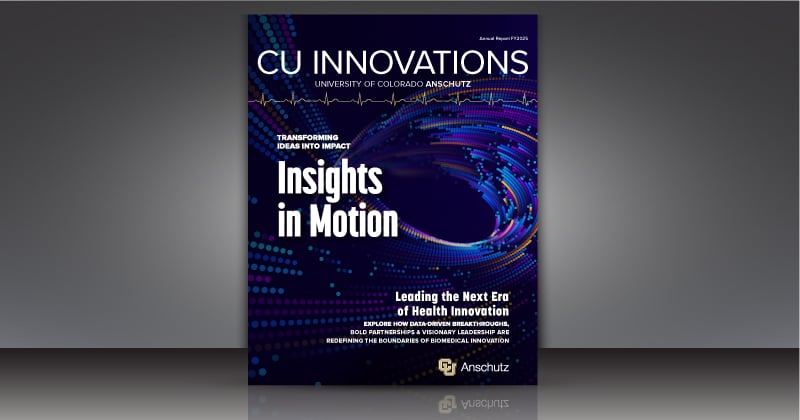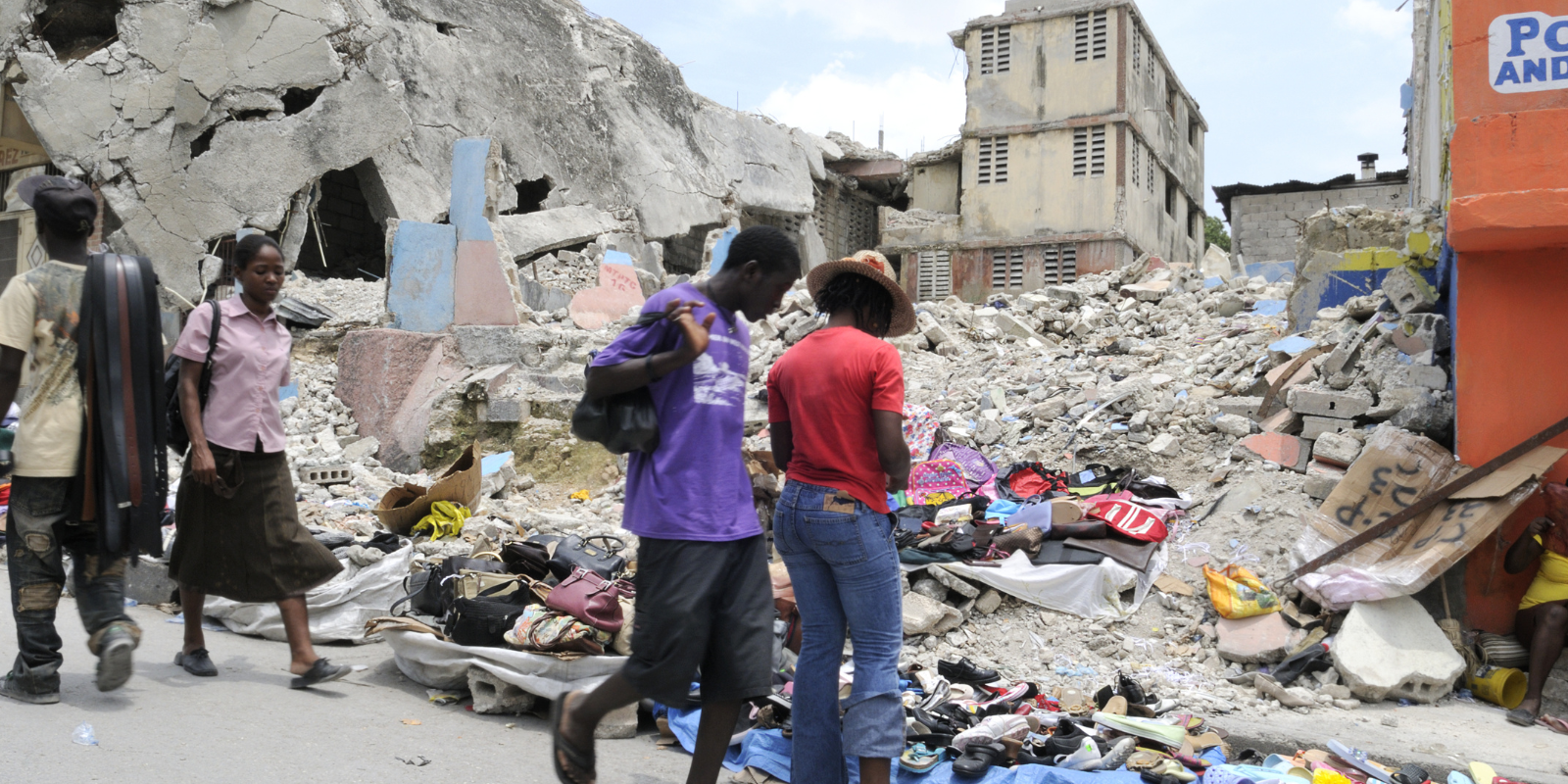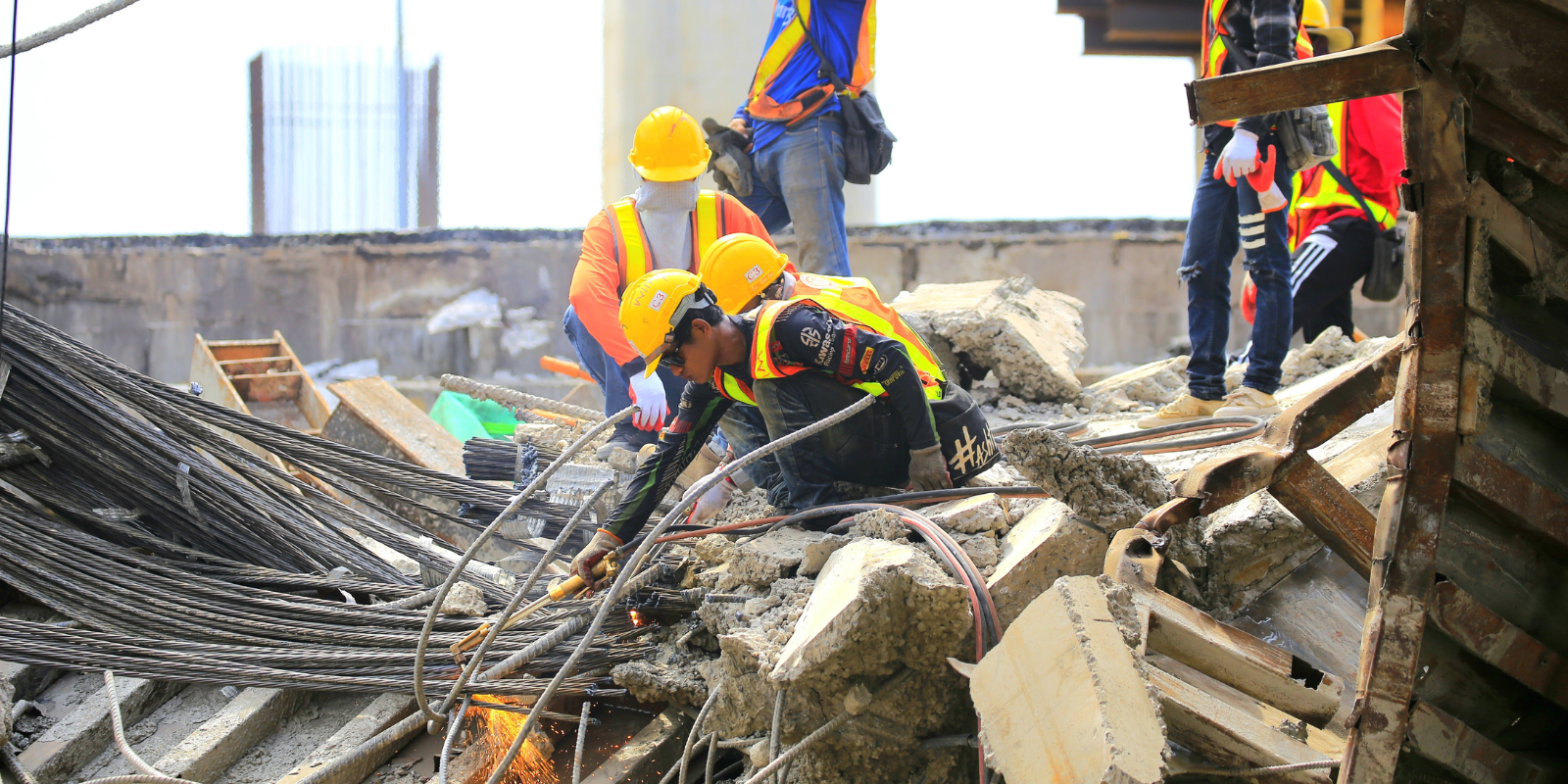What you need to know: Indigenous research and worldviews have long been marginalized by Western science. CU Anschutz geneticist Katrina Claw, PhD, explains how integrating Indigenous approaches with Western perspectives can benefit humanity's understanding of myriad health science challenges, from combating climate change to reducing bias.
Katrina Claw, PhD, a Diné (Navajo) geneticist at the University of Colorado Anschutz Medical Campus, is a leader in the field of genomics and a champion for the advancement of Indigenous science. As we celebrate Indigenous Peoples’ Day 2020, we sat down with Claw to learn how furthering Indigenous approaches can benefit humanity on myriad levels – deepening our understanding of our health and environment, decreasing bias in science, and encouraging present and future generations to value “traditional” knowledge.
You co-edited the first special issue of Human Biology dedicated to Indigenous science, which was released in June 2020. What has been the response? What have you taken from the experience?
The response has been very positive. I think that people in both the Indigenous community and the science community were really waiting for something like this, which underscores how important it was to get this out. Also, I think it underscores how things are changing in academia.
When we initially put out our call for submissions, we received so many wonderful and insightful submissions. As a co-editor, it was my job to go through the difficult process of selecting those who would be in this first issue. Because of the overwhelming number of abstract submissions we received, our colleagues were actually able to create a second issue of Human Biology dedicated to environment and ecology. That issue will be published this fall.
There are so many very high-caliber Indigenous scientists doing amazing research throughout the world. We got submissions mostly from the United States, but also from Canada. A lot of people are collaborating with world Indigenous communities as well. That was really great to see. The diversity of topics was just amazing.
As you reviewed the breadth of work being done by your colleagues, what projects were you most excited by?
I think that I'm biased. [Laughs] I'm really interested in genetics and genomics, so for me I was excited about how my colleagues are really taking community engagement to a new level, and forming genetics-related projects that are meaningful to the community.
This spans across many disciplines. A lot of people are thinking about epigenetics and thinking about how to look at the impact of colonization using genetic techniques. People are looking at immune response, which is particularly important now in the era of COVID-19. People are using new technologies like CRISPR (Clustered Regularly Interspaced Short Palindromic Repeats) and next-generation sequencing to look at novel variation in Indigenous communities and actually trying to bring that technology into these communities.
I'm very excited about the future of that. Imagine being able to sequence a whole genome in a tribal community and not in a university setting.
What is the benefit of being able to sequence an entire genome in the community, rather than at our campus?
Katrina Claw
I think this is really a way that you can empower the communities. A lot of the mistrust and distrust that Indigenous communities feel toward research and some STEM fields is because there isn't a very transparent process. A lot of times the sequencing and DNA extraction happens behind closed doors in a laboratory that's far from the community involved.
But if you could bring that technology into the community, it demystifies the process of scientific research and actually puts the science into the hands of the community. So the community could be the ones extracting the DNA and determining where the samples are stored and analyzing the data. I think it breaks down that barrier between communities and researchers.
Is it fair to say that to date, Indigenous approaches have largely been, if not outright dismissed, minimized and under-appreciated by Western medicine?
Yes, definitely. We see this especially within the sciences and health fields. People hear the word “traditional” and they think of it as antiquated or not backed by science. But when we think of traditional knowledge, we have to remember that it is based upon repeatedly tested observations over time in these communities. We typically don't define it that way, but this is really what it is. These are tried-and-true processes and methods that have been used in Indigenous communities for millenia.
What can Western science community learn from Indigenous research and worldviews?
One of the things that we wanted our issue of Human Biology to highlight is that there are multiple ways of knowing. Science can be advanced in many ways. We can incorporate Indigenous expertise to explain a lot of the data and trends that we see. It's important to know that for millennia, Indigenous people have been scientists. We domesticated corn. We studied celestial bodies that contribute to our understanding of them and to science today.
Related to my research, a lot of medications that we use today were derived from Indigenous people's traditional knowledge of herbs and plants and their use in treating ailments. That's one of the ways that we can start learning and incorporating Indigenous approaches and worldviews. A lot of this knowledge is still in our communities today. We still have knowledge that is passed down by elders to the next generation.
Science is inherently biased because it comes from one perspective, a Westernized perspective. But what if we incorporated other perspectives? How much more could we know and how much less-biased could science be by incorporating these different worldviews?
There is a lot of hype around diversity and inclusion, especially now. People are thinking about ways to promote this. Within science, it can make us less biased and more inclusive. It might even be more enticing to upcoming Indigenous scientists to enter the field when they see that there are people like me and my colleagues who are trying to incorporate these perspectives into Western science.
How has the study of our environment, as just one example, been elevated by the inclusion of Indigenous research and perspectives?
An over reliance on western science has led to ecosystems degrading, and many biologists and conservationists are now using Indigenous science to study the environment – thinking about how we can use traditional knowledge to provide solutions to climate change and deforestation, species extinction, and also ecosystem degradation.
It’s important to think about Indigenous science as a way to sustain our planet for the future. A lot of Indigenous people talk about making sure you think about your science as impacting the “seven generations.” So not only your generation, but seven generations in the future.
It's about thinking of your environment as interconnected and comprehensive and as a part of a holistic entity, as opposed to just studying one specific area and forgetting about the rest of it. From Indigenous perspectives, humans are part of that whole network. We influence the animals and the plants and the ecosystem around us, so we’re very much a part of it and not separate from the system.
It’s important to think about Indigenous science as a way to sustain our planet for the future. A lot of Indigenous people talk about making sure you think about your science as impacting the “seven generations.” So not only your generation, but seven generations in the future.
– Katrina Claw, PhD
Why do you think Western science is turning to Indigenous science to inform how we understand and address climate change?
Interconnectedness and thinking about things holistically are values and epistemologies that we as Indigenous peoples already know.
I’ll often read scientific articles that are announcing novel breakthroughs. One of them was about Polynesian voyagers making contact with Native Americans in the distant past. They found genetic signatures in Polynesian populations from Native Americans in the past. This was treated as a huge announcement, but we already have stories within our Indigenous communities that we had previous contact with Polynesian people. So it was not a shock in the Indigenous communities that this was found to be the case in the scientific data.
If they had included some Indigenous perspectives in that particular project, then I think it would have made it a lot more powerful, and it would also give power to the oral histories that our communities have kept alive.
In February 2020, you opened a new genomics lab in the Division of Biomedical Informatics and Personalized Medicine on the CU Anschutz campus. What are your areas of focus?
My research program focuses on personalizing medicine, using genetic information and biomarkers for tailored treatment. My primary research focus is on pharmacogenomics, a subfield of personalized medicine. The other part of my research examines the ethical, legal, and social implications of genomic research, or ELSI research, with Native communities in the U.S. and also around the world.
Right now, a lot of my research focuses on hepatic genetic variation, genetic variation in liver samples. Many of our current medications are metabolized by the liver, so it's important to see how variation affects metabolism. The other portion of my work looks at tobacco cessation and nicotine metabolism, and how to personalize treatment in Native communities. Nicotine is metabolized by some of the same genes that metabolize different medications (CYP P450s), so it's interesting to study this in Native populations because not only do we see a lot of genetic variation but there is also a cultural and ceremonial connection to tobacco in some communities.
The other portion of my research is qualitative, where I examine perspectives of genomic research in Native communities. This involves interviews and surveys that I conduct with community members to see what they think about pharmacogenetic research, or what they think about genomic research in general and what their concerns are and how to move forward. It really depends on the community that I'm working with and what their input is on how to move forward with some of these studies.
In addition to this significant scope of work, you also received a grant from the NIH recently. Tell us about that.
I was awarded the Genomic Innovator Award (R35) from the NHGRI, and it has opened up a lot of doors to working with communities. My proposal was all about finding novel, innovative ways to engage the community in conversations related to genomics research. That has really excited me. Unfortunately, a lot of the community work I had planned has to be put on hold for now, but we're trying to figure out how to do things virtually. But I'm excited about both the quantitative and the qualitative research that I'm doing.
As the COVID-19 pandemic impacted your ability to conduct research – as it has so many researchers on campus and around the world – has our response to the virus and its impact on Indigenous communities shed any light on a potential vaccine? Or provided insight about the virus’ impact on Indigenous peoples?
There are COVID-19 vaccine trials that are currently ongoing, and there has been a lot of discussion about how to include diverse populations, including Indigenous populations. My tribe, the Navajo Nation, has agreed to participate in some of the vaccine trials, but there was a lot of concern from the community about the transparency behind the trials. A lot of people were very worried.
In general,the COVID-19 pandemic has really highlighted how ravaged some Indigenous communities became. The Navajo Nation itself had higher infection rates per population number than any other place in the United States, including New York state. This was primarily because of the lack of infrastructure: lack of running water, electricity, proper housing, and availability of food. These have been issues in our communities that we've known about for generations, but until the numbers started to climb, there was really nothing done about it.
It also brings in the cultural aspects. A lot of Native communities have large extended families, not just the typical small nuclear family, and live in multi-generational homes. When you're thinking about social distancing guidelines, how do you enact and support this if you don't take into consideration a community’s cultures and traditions? A lot of these differences have been highlighted more with the pandemic than ever before.
Are you hopeful that this could lead to some positive change and improvement in those areas you mentioned?
Yes, definitely. There has been support from private donors and fundraisers, as well as the government, in helping fund some of these changes in the communities. I think that it's finally not being hidden under a rug, but it is being talked about and people are trying to find solutions.
What do you want people to know about the work that you and your colleagues are doing to advance Indigenous perspectives in the global science community?
I think that one of the biggest lessons we can learn is that there are really multiple ways of knowing, and just to be open to new ways of thinking and new technology. I'm very excited about the upcoming generation who are learning these techniques and wanting to be involved in research, and that we can really encourage them from the get-go.
There's this perception that Native communities are anti-science. We're not anti-science, we're just against research misconduct and non-transparency. People shouldn't be afraid to approach Indigenous communities with project ideas that they're excited about. We just want to be at the table and be able to say yes or no.




